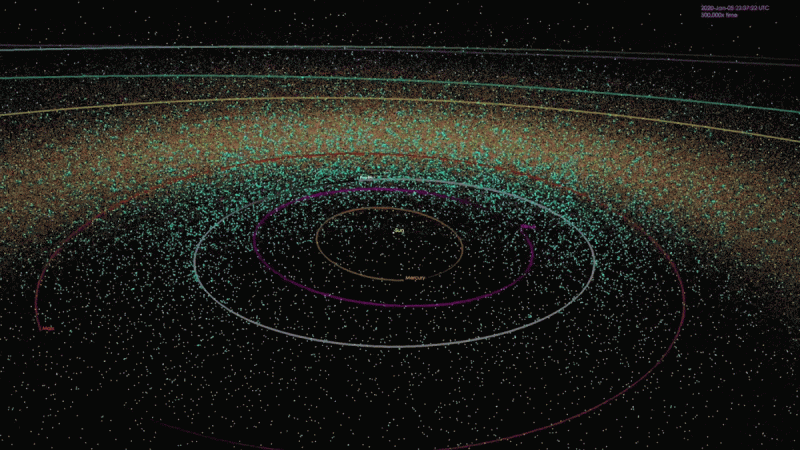
NASA already has a planetary defence programme in the form of its Center for Near-Earth Object Studies and it is twenty years old now. Established in 1998, it involved astronomers from all over the world and it was set up because of a threat identified that year.
According to a release put out by NASA, observational data on an asteroid, named 1997 XF11 put it on a collision course with Earth. Astronomers believed that believed that the asteroid -- about a kilometre wide could strike Earth in 2028. There was a small chance that it could crash into Earth.
The Minor Planet Center (MPC), in Cambridge, Massachusetts, put out this message, says a NASA report. It was important because MPC is the worldwide repository for asteroid observations and they also carry out initial determination of asteroid orbits. In spite of this message being intended to reach only a few eyes, namely a small community of astronomical scientists that hunt and track asteroids, it was a call to make more observations and collect information.
Around this time, the report notes that several media outlets did not really understand this internal announcement and they mistakenly went about highlighting the chances of Earth going to get hit.
Since Earth was not in the line of 1997 XF11, it is not going to hit in 2028. Astronomers came to this conclusion after performing more precise orbit analysis with the then available asteroid observations, said a report by NASA.
Don Yeomans, who was at that time the leader of the Solar System Dynamics group at the Jet Propulsion Laboratory (JPL), teamed up with colleague Paul Chodas, and the two of them came to the conclusion that the Earth was not going to end in 2028.
"The 2028 impact was essentially impossible," said Chodas, who is now director of NASA's Center for Near-Earth Object Studies (CNEOS), at JPL.
"To this day we still get queries on the chances of XF11 impacting in 2028," Chodas said. "There is simply no chance of XF11 impacting our planet that year, or for the next 200 years."
Over the last 20 years, CNEOS has made it possible for NASA to become the best in the world as far as asteroid data is concerned, notes the report.
NASA explains that the first step in calculating impact risk asteroids or even comets is to assess whether or not the object's orbit intersects Earth's, if it does, how close will it physically get to Earth?
JPL was already making high-precision orbits calculations for select Near-Earth Objects (NEO) —asteroids and comets with orbits within 195 million kilometres of the Sun. This was reportedly before NASA launched its NEO Observations Program. It has since, over time, upgraded orbit models to cover several thousands of asteroid positions and their orbits.








